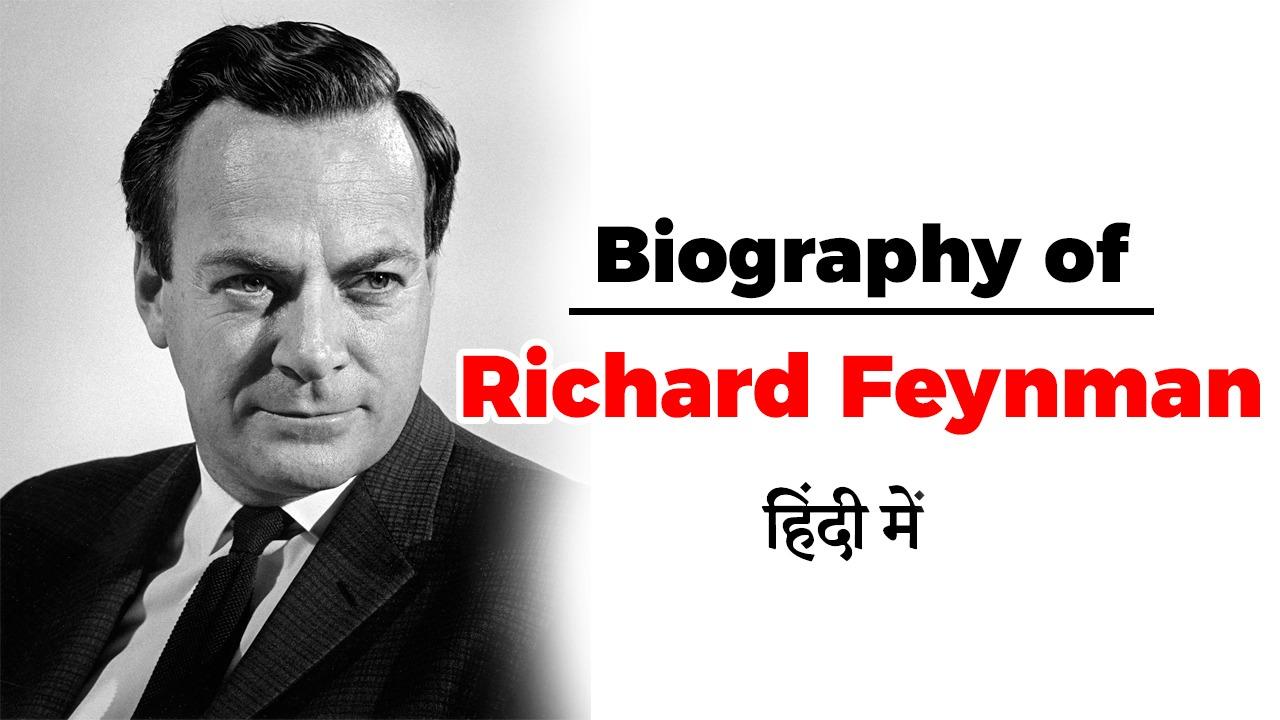Table of Contents
EARLY LIFE
- Feynman was born on May 11, 1918, in Queens, New York City to Lucille , a homemaker, and Melville Arthur Feynman, a sales manager originally from Minsk in Belarus.
- The young Feynman was heavily influenced by his father, who encouraged him to ask questions.From his mother, he gained the sense of humor that he had throughout his life.
- As a child, he had a talent for engineering, maintained an experimental laboratory in his home, and delighted in repairing radios. When he was in grade school, he created a home burglar alarm system.
EDUCATION
- Feynman attended Far Rockaway High School.Upon starting high school, Feynman was quickly promoted into a higher math class.
- When Feynman was 15, he taught himself trigonometry, advanced algebra, infinite series, analytic geometry, and both differential and integral calculus.
- He attended the Massachusetts Institute of Technology. Although he originally majored in mathematics, he later switched to electrical engineering. Noticing that he “had gone too far,” he then switched to physics.As an undergraduate, he published two papers in the Physical Review.
EDUCATION
- In 1939, Feynman received a bachelor’s degree. Feynman received a Ph.D. from Princeton in 1942. In his doctoral thesis titled “The Principle of Least Action in Quantum Mechanics. A key insight was that positrons behaved like electrons moving backwards in time.
- He continued to see his high school sweetheart, Arline Greenbaum, and was determined to marry her once he had been awarded his Ph.D. despite the knowledge that she was seriously ill with tuberculosis.
- On June 29, 1942, they took the ferry to Staten Island, where they were married.
MANHATTAN PROJECT
- In 1941, with World War II raging in Europe but the United States not yet at war. After the attack on Pearl Harbor had brought the United States into the war.
- Feynman was recruited by Robert R. Wilson, who was working on means to produce enriched uranium for use in an atomic bomb, as part of what would become the Manhattan Project.
- At this juncture, in early 1943, Robert Oppenheimer was establishing the Los Alamos Laboratory, a secret laboratory on a mesa in New Mexico where atomic bombs would be designed and built.
MANHATTAN PROJECT
- At Los Alamos, Feynman was assigned to Hans Bethe’s Theoretical (T) Division,and impressed Bethe enough to be made a group leader.
- He and Bethe developed the Bethe–Feynman formula for calculating the yield of a fission bomb. As a junior physicist, he was not central to the project.
- He administered the computation group of human computers in the theoretical division. He invented a new method of computing logarithms that he later used on the Connection Machine.
MANHATTAN PROJECT
- Returning to Los Alamos, Feynman was put in charge of the group responsible for the theoretical work and calculations on the proposed uranium hydride bomb.
- Informed that Arline was dying, Feynman drove to Albuquerque and sat with her for hours until she died on June 16, 1945.
- He then immersed himself in work on the project and was present at the Trinity nuclear test. Feynman claimed to be the only person to see the explosion without the very dark glasses or welder’s lenses provided.
QED
- Feynman nominally held an appointment at the University of Wisconsin–Madison as an assistant professor of physics.
- His father died suddenly on October 8, 1946, and Feynman suffered from depression. Unable to focus on research problems, Feynman began tackling physics problems, not for utility, but for selfsatisfaction.
- Quantum electrodynamics suffered from infinite integrals in perturbation theory. Feynman then offered his version, titled “Alternative Formulation of Quantum Electrodynamics”.
QED
- His 1949 paper on “The Theory of Positrons” addressed the Schrödinger equation and Dirac equation, and introduced what is now called the Feynman propagator.
- Finally, in papers on the “Mathematical Formulation of the Quantum Theory of Electromagnetic Interaction” in 1950 and “An Operator Calculus Having Applications in Quantum Electrodynamics” in 1951, he developed the mathematical basis of his ideas, derived familiar formulae and advanced new ones.
- At Caltech, Feynman investigated the physics of the superfluidity of supercooled liquid helium.Feynman provided a quantummechanical explanation for the Soviet physicist Lev Landau’s theory of superfluidity.
SURELY YOU’RE JOKING, MR. FEYNMAN!
- In the 1960s, Feynman began thinking of writing an autobiography, and he began granting interviews to historians. In the 1980s, working with Ralph Leighton (Robert Leighton’s son), he recorded chapters on audio tape that Ralph transcribed.
- The book was published in 1985 as Surely You’re Joking, Mr. Feynman! and became a best-seller.
- Feynman has been criticized for a chapter in the book entitled “You Just Ask Them”, where he describes how he learned to seduce women at a bar he went to in the summer of 1946. A mentor taught him to ask a woman if she would sleep with him before buying her anything.
NOBEL PRIZE
- Schwinger, Tomonaga and Feynman shared the 1965 Nobel Prize in Physics “for their fundamental work in quantum electrodynamics, with deepploughing consequences for the physics of elementary particles”.
- He was hospitalized at the UCLA Medical Center on February 3, 1988. A ruptured duodenal ulcer caused kidney failure, and he declined to undergo the dialysis that might have prolonged his life for a few months.
- Watched over by his wife Gweneth, sister Joan, and cousin Frances Lewine, he died on February 15, 1988, at age 69.






















 WhatsApp
WhatsApp